
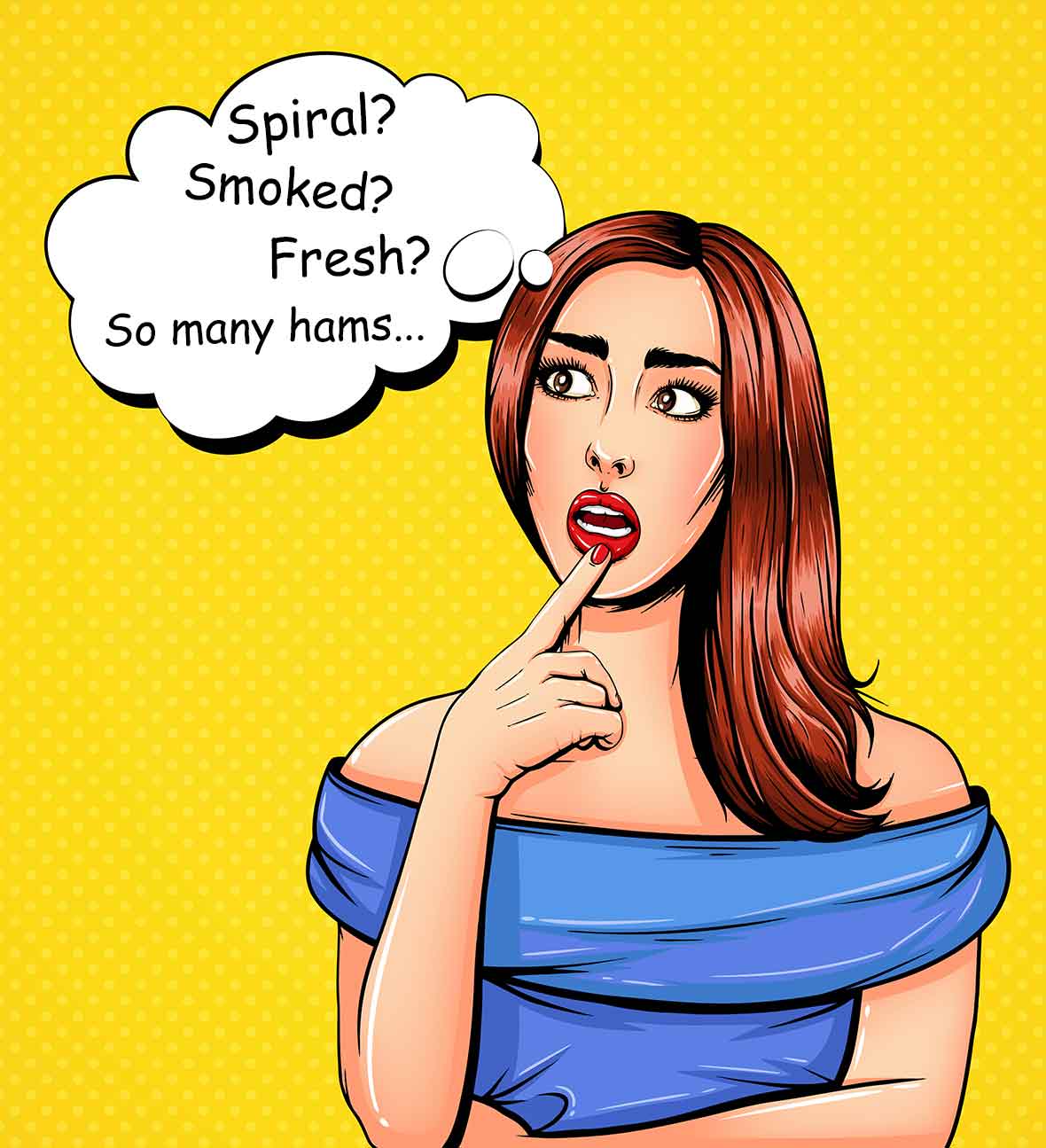
Can we confess something? It can be intimidating to stand at the store and be confronted with countless vaguely-defined words on packages. Spiral-sliced. Cured. Uncured. Smoked. Fresh. With natural juices. Water added. It’s enough to make you want to just walk away and order Chinese for Easter and Christmas.
Here’s the thing: With a bit of vocabulary building, which we’re happy to provide, you can get command over those marketing terms so you can discern what you want—and more importantly, what you don’t want—in a holiday ham.
First, what is ham?
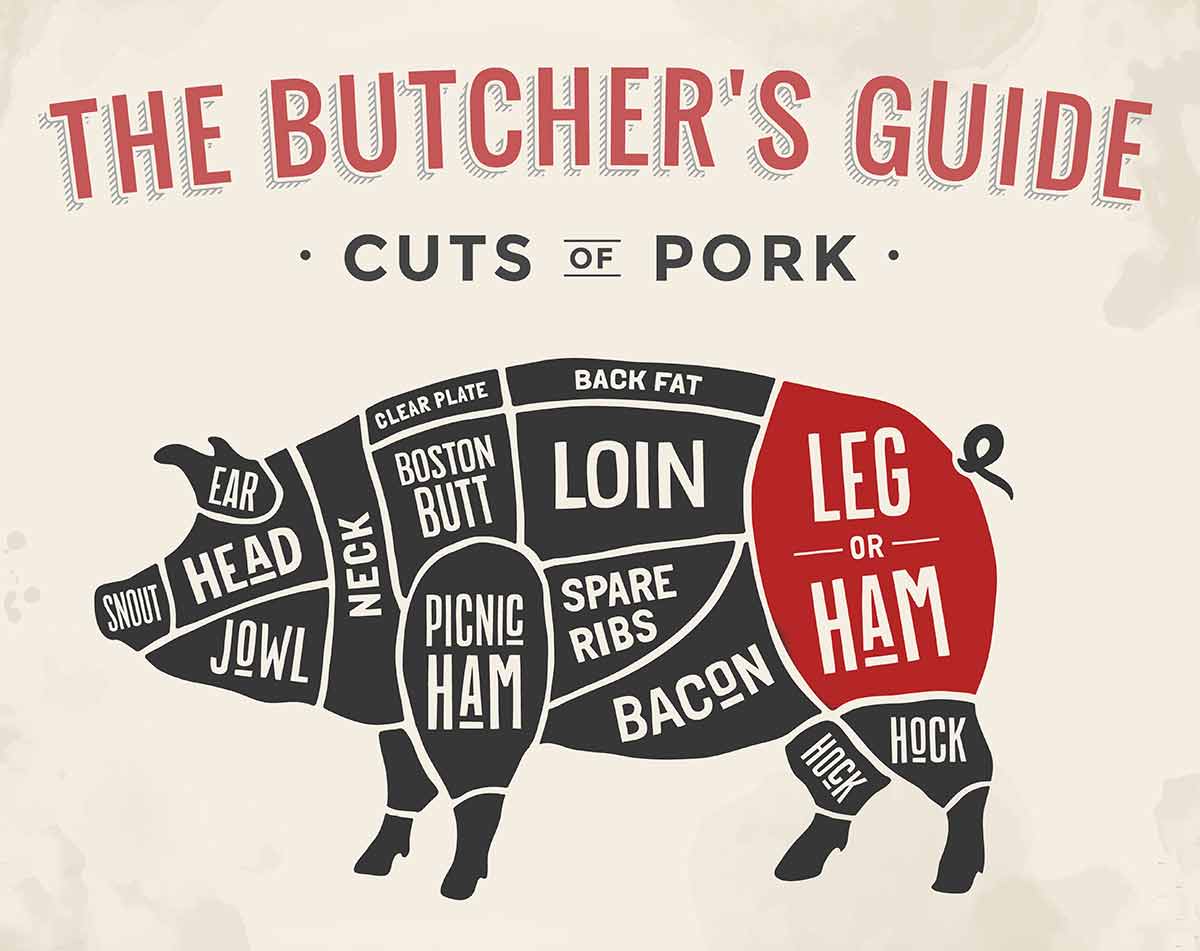
In the simplest terms, ham is a cut that comes from the rear leg of a pig. Fresh ham is an uncured leg of pork and must have “fresh” as part of the name. They’re the same color and texture as an uncooked pork roast and must always be cooked before eating. A cured ham has been preserved by wet (brining) or dry (salting) curing and is either smoked or unsmoked. Deep pink in color, they can be sold as ready-to-eat or may require cooking. Cured hams are also sold as smoked and unsmoked.
That’s your starting point. Read on to find out the finer details about that delish, porky centerpiece.
What kind of ham should I not buy?
You want to buy something that is labeled “ham.” That indicates something that’s at least 20.5% protein with no added water. “Ham with natural juices” is 18.5% protein with about 8% added water. “Ham with water added” must contain at least 17% protein with up to 10% water. And you definitely don’t want a “ham and water product.” It can contain any amount of water and will have a spongy texture and an unpleasantly wet mouthfeel. Bottom line: When you’re standing in the supermarket, opt for just “ham.” Every time and without fail.
Now that the pretenders to the throne have been banished, let’s consider the many forms true, real, honest ham comes in and what they mean.
Spiral-sliced
Many hams are offered pre-sliced, which is typically referred to as “spiral-sliced.” Spiral-sliced refers to bone-in hams, which tend to retain more flavor and moisture than boneless hams, which sometimes take on a bit of a processed-ham look and feel. Spiral-sliced hams often come with their own glaze packet and while these are convenient and taste alright, please ditch them. Making your own ham glaze will definitely amp up that pork. It’s a cinch and you can claim ownership over that lovely hunk o’ meat.
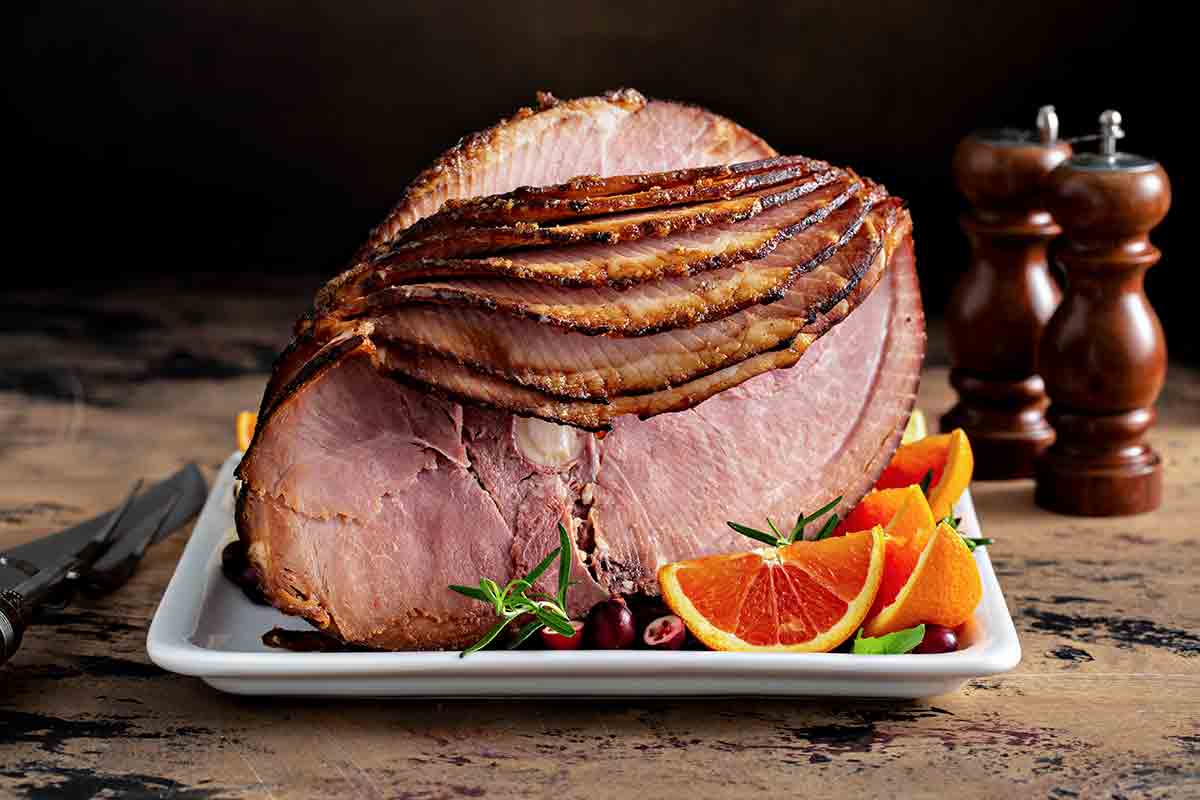
Something to remember: Spiral-sliced, bone-in ham has a tendency to dry out and “frill” in the oven more than whole, unsliced bone-in ham. Covering yours with foil until the last 10 to 20 minutes of roasting will help to keep it from turning into pink leather. A spiral-sliced ham is your best bet if you’re terrified of standing in front of guests trying to gracefully hack your way around the bone come carving time.
Smoked
Most market hams have been smoked, which imbues the meat with anything ranging from barely perceptible to sock-you-in-your-mouth flavor. Take a look at the label to see what kind of wood chips were used. Hickory is going to impart a more pronounced and bolder smokiness than applewood. Both cooked and uncooked hams can be smoked, so make sure to look at the label to decide which you prefer.
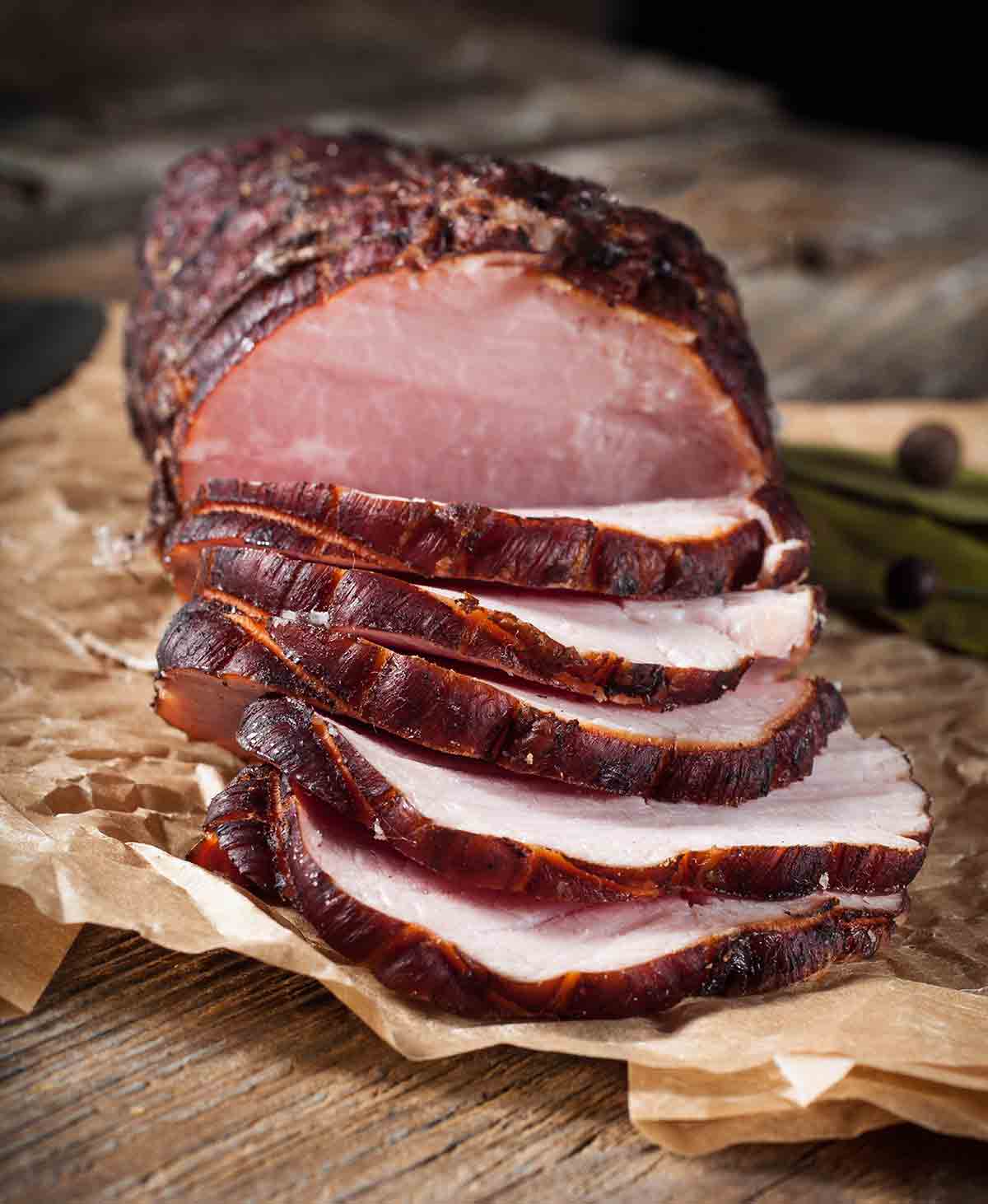
A cooked, smoked ham can be eaten immediately and is perfect for sandwiches or a casual dinner if you don’t want to spend time heating it, but it’s super easy to warm up if you’re aiming for a hot dinner. An uncooked smoked ham will clearly state on the label that it needs to be “cooked thoroughly,” just in case you’re unsure of what you’ve purchased.
Glazed
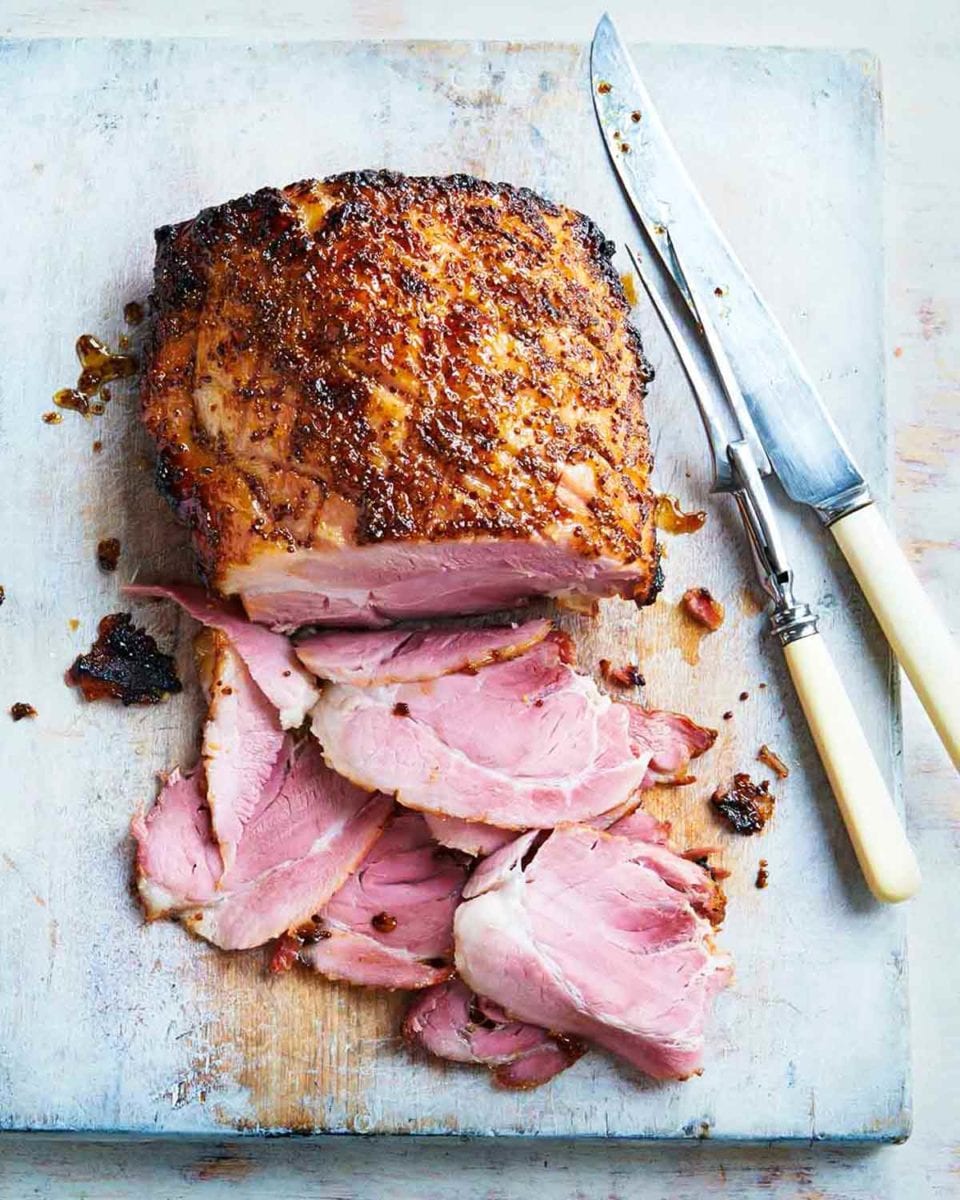
A glazed ham is pretty self-explanatory: It’s a ham that has been pre-glazed. So, if you’re holding a copy of our glazed ham recipe as you stand at the butcher counter, then you want to buy a ham that doesn’t already come injected or glazed with honey or maple. The reason? You don’t want the flavors of the recipe that you’re going to slather all over the outside of the ham competing with the flavor that’s already been injected into the ham. That could also get pretty damn sweet.
What about city vs. country ham?
For the most part, a city ham is what you know as a ham. These are the moist, thick (often spiral-cut) pre-cured hams that you serve during the holidays. Country ham, on the other hand, is popular in Appalachia, Virginia, and Tennessee. They’re served more thinly sliced and are saltier and drier than a city ham. If you’ve never prepared one, be aware that they are much different than an average ham. Country ham is delicious, trust us, if you know what you’re doing.
How much ham should you buy?
Figure between 1/2 and 3/4 pound per person if it’s a bone-in ham. For a boneless ham, you’ll want about 1/3 pound per person. And, natch, allow for more if you’re the sort who anticipates ham leftovers.
How far in advance can I buy a holiday ham?
Most hams come shrink-wrapped in packaging so they’re safe to stash in your fridge, unopened, for several days. And, remember, the ham you find at your grocery store is most likely already cured or cooked through and simply requires warming.
Originally published March 23, 2019










agree w tim…article lacks meat.
ha
tom, I like the play on words. The article goes into detail about what not to buy and then explains the different types that are available. It’s more of a glossary of terms so you do what I did years ago and buy an uncooked uncured ham thinking it was a cooked spiral ham…
Renee, some of the recipes look good. But we just cook (reheat the ham). Because our son has some severe food allergies.
Completely understand. I have to deal with some of my own. Wishing you and yours much safety, peace, happiness, and easy-to-understand ham labels.
Your article on which ham to buy really doesn’t help. You said any ham is a good ham. That really doesn’t help me too much.
Timothy, our apologies and our gratitude for drawing our attention to your confusion. What we intended to do with this article wasn’t to name a particular brand that we find the best because, in our experience, different people care for different levels of saltiness and sweetness in their ham. Our intention was to demystify a lot of the common terms found on ham packaging so that you could make a more informed decision, and I’ve clarified the text at the top of the page to hopefully better articulate that. Thanks so much. And if you are seeking a particular brand, for what it’s worth, in past years I have always been quite pleased with the Trader Joe label hams.
Renee thanks for clarifying what the article was for. And I do understand about people liking different things. Thank you, Tim Schell.
Tim, I so appreciate your understanding and kindness. Have a lovely holiday…and do let us know if you tried any of our ham recipes.